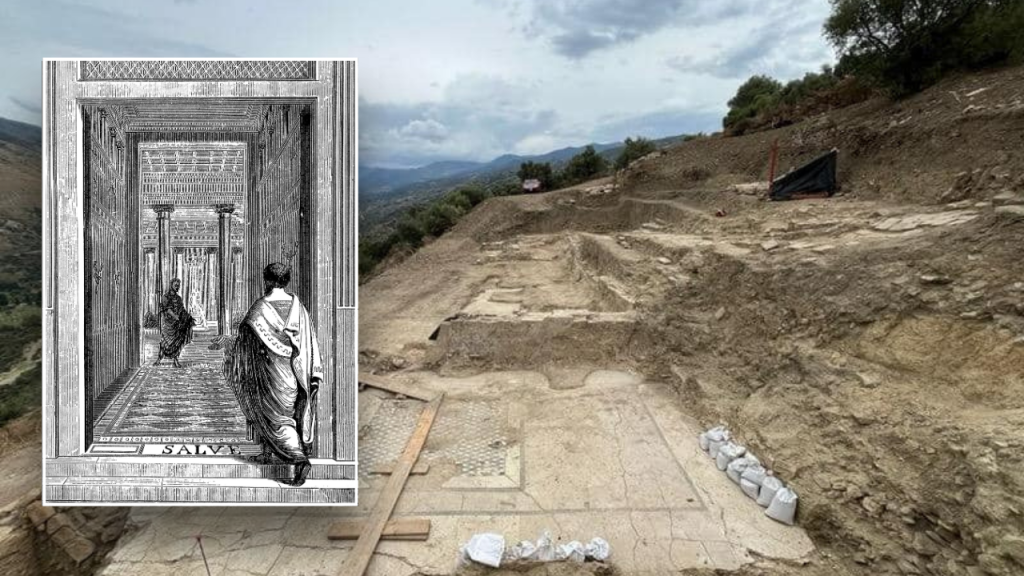Archaeologists from the University of Palermo recently uncovered a unique ancient bathhouse in the hills of Sicily, dating back to antiquity. The thermal complex, situated at the Halaesa archaeological site in northern Sicily, measures over 8,600 square feet and features two rooms with mosaic floors and a courtyard with arched wings. The discovery also revealed new roads and a vast complex with fortifications, shedding light on the urban layout of the Hellenistic and Roman city. Halaesa was part of Magna Graecia, an area inhabited by Greeks and eventually integrated into the Roman Empire during the First Punic War in 263 B.C.
While the exact nature of the bathhouse, whether Roman or Greek, remains unclear due to the area’s history of settlement by both civilizations, the structure is described as unique for its rich decorative apparatus and size. Bathhouses played a significant role in daily life in Ancient Rome and Greece, serving as social hubs where citizens could interact while also offering exercise facilities and relaxation rooms. The newly discovered bathhouse in Sicily is among the most extensive on the island, equaling around 800 square meters. The archaeological find adds to the list of ancient discoveries made over the past year, including an ancient laundry room near the Vatican announced in June.
The excavation at Halaesa has unveiled not only the remains of the bathhouse but also a network of roads and a previously unknown monumental complex. The discovery is crucial for reconstructing the urban layout of the Hellenistic and Roman city, offering insights into the structure and organization of the ancient settlement. The bathhouse’s mosaic floors and architectural features, along with the surrounding landscape, provide a glimpse into the daily life and luxury enjoyed by residents of the ancient city. The finding highlights the historical significance of Sicily and its role as a crossroads of civilizations throughout the centuries.
The Mediterranean landscape surrounding the ancient bathhouse adds to the allure of the discovery, with pictures showcasing the structure’s design and features against a backdrop of natural beauty. Sicilian officials noted the importance of the find for understanding the cultural and architectural heritage of the region, emphasizing the significance of the bathhouse’s size and decoration. Bathhouses like the one found in Sicily were integral to ancient societies, bringing together people from different backgrounds and social classes for communal bathing and socializing. The excavation sheds light not only on the architectural achievements of the ancient city but also on its social dynamics and cultural practices.
The historical context of the bathhouse, situated in an area that was influenced by both Greek and Roman civilizations, adds to its significance as a testament to the region’s rich history. The discovery offers a window into the daily lives of ancient Sicilian residents, highlighting the importance of communal spaces such as bathhouses in fostering social interaction and relaxation. The archaeological excavation at Halaesa represents a step towards understanding the complexities of ancient urban planning and societal structures, providing valuable insights into the cultural heritage of the region. As further research and analysis are conducted on the newly discovered bathhouse, more details about its construction, use, and significance in the ancient city of Halaesa are expected to emerge.













